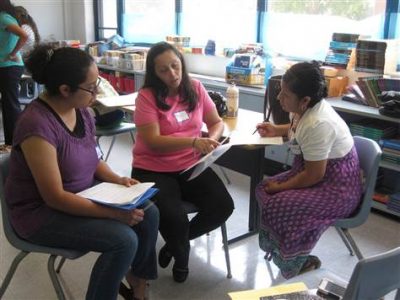Ball of confusion: How ‘edu-speak’ leaves too many parents behind
Like many parents, Dahlia Lithwick felt absolutely dumbfounded after sitting through one too many back-to-school meetings at her children’s school. The Ivy League-educated lawyer and journalist expressed her frustration in a revealing piece for Slate last week—one that highlighted the communication breakdown that hampers education reform.
The jargon-filled language has made its way into back-to-school nights, and it’s no wonder parents are confounded.
 “Somewhere along the line, public education became so completely overmastered by its own jargon, broad templates, and unspecified testable outcomes,” Lithwick wrote.
“Somewhere along the line, public education became so completely overmastered by its own jargon, broad templates, and unspecified testable outcomes,” Lithwick wrote.She described sitting in one of those endless school meetings, the kind to which many of us rush breathlessly from work and other obligations because it seems important, and then—as our heads begin to spin—wonder why.
“I felt as if I were toggling between a business school seminar and the space program; acronyms alone—seemingly random sequences of letters like MAP and SOL and EAPE—were being deployed more frequently than actual words.”
The tendency toward acronym-laden programs has been true since long before the federal government came up with an astonishing list of them, including ESEA (Elementary and Secondary Education Act), NCLB (No Child Left Behind), and President Barack Obama’s Race to the Topcompetition, also known as R2T, RTT or even RTTT.
At The Hechinger Report, where many of us have covered education for decades, we are still easily lost in the acronym jungle. Yet, it’s part of our mission to help explore, explain and analyze trends with terribly unwieldy names, like the Common Core State Standards (new, mostly nationwide
